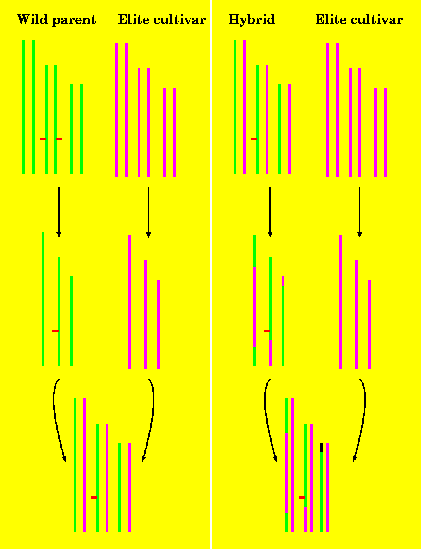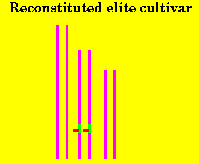Wide Crosses

Desireable traits such as disease resistance can often be found in wild
relatives of domestic crops. However, when you cross a wild parent with an elite cultivar, the hybrid has a combination of genes from both parents. To breed
the desireble gene back, many generations of backcrosses to the elite cultivar must be done.
In cross between a wild plant variety and an elite cultivar, the wild parent (green) and the elite cultivar (magenta) each contribute one copy of each of three chromosome pairs to the hybrid (bottom left). A disease resistance gene in the wild parent is indicated by a red tick mark.
In the next generation (right), the hybrid is backcrossed to the original elite cultivar. Due to genetic recombination (ie. crossing over) in the hybrid,
genetic material is exchanged between wild and elite chromosomes. In the resultant offspring, one copy of each chromosome is solely derived from the elite parent, while the second copy of each chromosome may have genes from both parents. In each generation of
back crossing, more of the wild parent genes are lost.

In effect, repeated back crossing reconstitutes the elite parent genome. If the resultant offspring have the same genes as the original elite cultivar, they will also have the same agronomic traits. In this case, however, we wish to retain the small piece of the wild chromosome bearing the disease resistance gene.
 previous page
previous page
 next page
next page



 previous page
previous page
 next page
next page